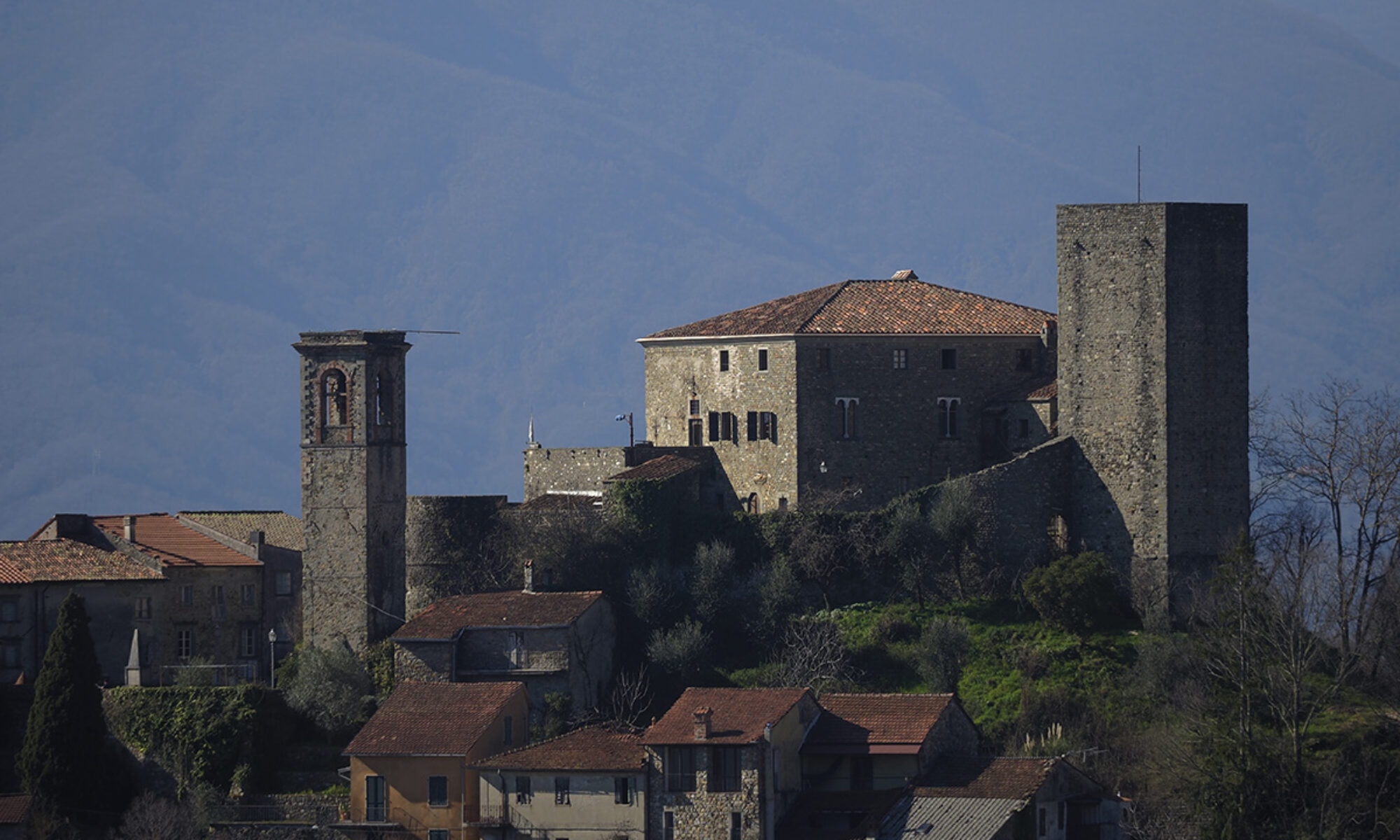Castiglione del Terziere was once part of the territories of the Este Princes, which, after the 1202 came under the control of the Malaspina Princes. The houses of the village were already present in the early 14th century and contributed to the structure of castrum—a fortified complex that protected the ancient fortilitium. This consisted of buildings from both the early and late Middle Ages, integrated with defensive walls from the 15th century, later restored by Lorenzo de’ Medici, the Magnificent..
The broad and noble historical panorama , combined with a landscape of rare beauty, make Castiglione del Terziere a a unique place, rich in cultural and historical value . The current castle stands precisely on the site of the ancient fortilitium.
The roman road, in its valley route through the Vallescura (where the remains of an 18th-century brick factory, an example of industrial archaeology, can still be seen), would branch off to reach the fortified complex of Castiglione. The same was later true for the Via Romea or Francigena, which passed through the area to reach an important hospitale, a rest stop for travelers.
At the heart of castrum era il fortilitium, dating back to the 8th–9th centuries AD,which in the following centuries evolved first into Castle—the residence of Imperial Vicar Castruccio Castracani—and later into a representative palace of the Florentine Government, housing the Republican and later Medici Magistracy.During the Renaissance, Castiglione del Terziere was home to many magistrates, judges, and notaries, as it functioned as a Florentine enclave, isolated from the rest of Tuscany.
After Castruccio, control passed to Marquis Franceschino Malaspinaof the Spino Fiorito branch, known as "the Soldier", who held prestigious positions such Captain of War of the Florentine Republic, Viscount of Luni and Podestà of Milan. In the 16th century nacque qui anche il , the Medici commander Giovanni Segalara, known for his many military victories , was also born here.
The Restoration of the Castle
By the 1960s, both the castle and the village were in critical condition. The castle was little more than a ruin. Thanks to extensive structural consolidation, dismantling, and reconstruction work, carried out using scientific methods and with respect for architectural integrity, it was saved..
This was followed by an ideological and spiritual restoration, with the aim of reviving the castle's cultural soul . Rooms were furnished to allow visitors to "breathe" the atmosphere of centuries of history—of jurists, notaries, magistrates, writers, and scholars and scholarsThe restoration included:
- A historical library
- A document archive
- A representative art gallery
- A school of musical philology and vocal polyphony
In the upper part of the village, some historic houses have already been restored, while others are currently undergoing recovery.
The Niccolò V Center for Humanistic Studies
For over 50 years, both Castle of Castiglione del Terziere has been home to the Niccolò V Center for Humanistic Studies, named after the great humanist pope from Lunigianaand founder of the Vatican Library. The center houses a rich library specializing in:
- Local history
- Humanities
- Italian literature
Every year, the center welcomes thousands of scholars and students. The scent of culture fills the air, and the Ancient Residences of the Terziere are essential in offering hospitality and tranquility to those seeking inspiration, study, and inner reflection.
